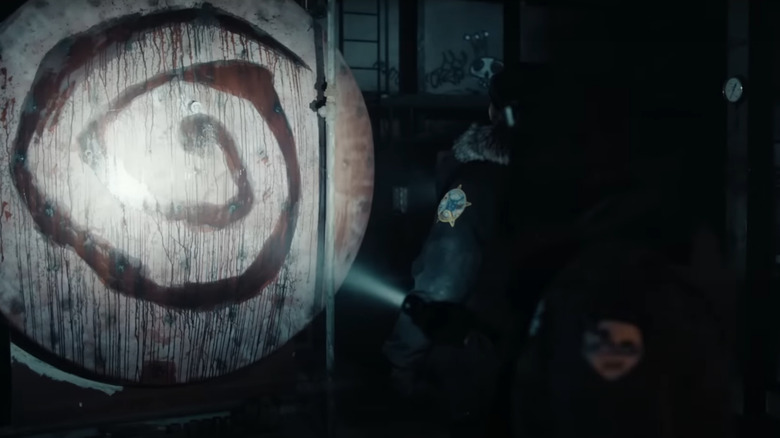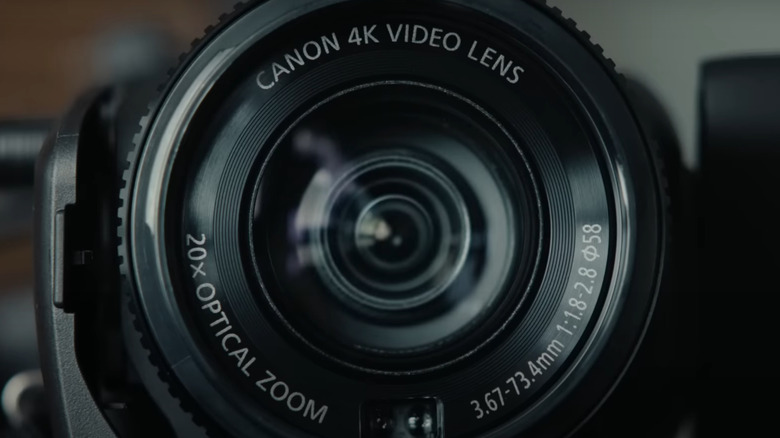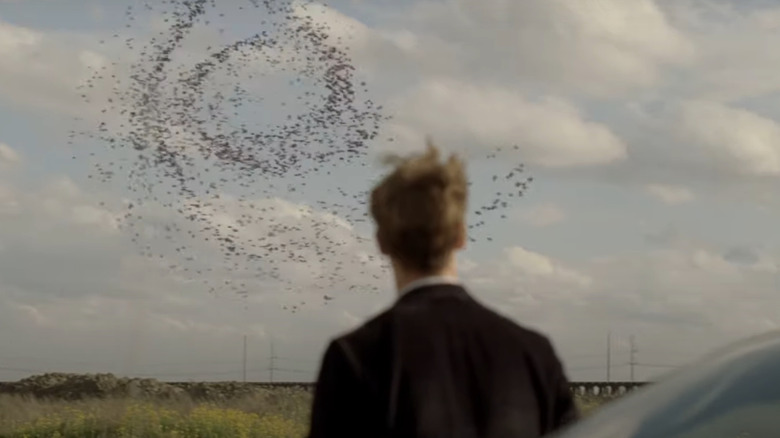“True Detective” season 1 was one of the most enjoyably unsettling seasons of TV ever produced. Writer/Creator Nic Pizzolatto crafted a detective show like no other, mixing in elements of cosmic horror, Nietzschean philosophy, and one of the creepiest secret society plots ever conceived. But you know what the most disturbing thing about that first season was? The fact that Errol Childress (Glenn Fleshler), the serial killer who’s eventually taken out by detectives Rust Cohle (Matthew McConaughey) and Marty Hart (Woody Harrelson), was just the tip of the iceberg.
Throughout the first season of “True Detective,” Marty and Rust uncover an occult-worshiping, human-sacrificing abuse ring, whose members occupy high-level positions in society. And by the end of the season, it’s clear Childress was a particularly sadistic part of a much more insidious whole.
Now, the trailer for the upcoming “True Detective: Night Country,” suggests we might be about to delve back into the so-called Yellow King cult — so named for its members’ preoccupation with the lore of Robert W. Chambers’ short story collection “The King In Yellow” and the works of weird fiction it inspired. Seasons 2 and 3 of the series featured little to no references to the group, aside from a brief mention in season 3. But in the new trailer, a familiar symbol tied to the Yellow King cult can be clearly seen. Is this just an easter egg — a reference planted by the showrunners to appease fans of the show who might be upset that series creator Pizzolatto has been replaced by new showrunner, writer, director, and executive producer Issa López? Or is this a sign that we might be finally about to learn the true scope of the Yellow King cult?
The crooked spiral

Unveiled during the launch event for Warner Bros. Discovery’s new streaming service, Max, the trailer for the upcoming fourth season of “True Detective,” entitled “Night Country,” provides our best look yet at the Jodie Foster-led season. The episodes are set in Ennis, Alaska, where, as the official synopsis explains, “eight men who operate the Tsalal Arctic Research Station vanish without a trace.” This being “True Detective,” a pair of seemingly mismatched investigators, this time in the form of Liz Danvers (Jodie Foster) and Evangeline Navarro (Kali Reis), are tasked with solving the case.
But by far the most intriguing part of the trailer is when Foster’s Danvers discovers a red spiral symbol painted on the side of a storage tank. Illuminated by torchlight, the crooked motif should be very familiar to fans of the show, especially those who can’t get enough of the first season.
The same spiral appeared throughout “True Detective” season 1 and represented the secret, Yellow King-worshiping pedophile ring that Rust and Marty investigated. In the very first episode of the season, it’s seen carved into the back of Dora Lange, a sex worker whose body is discovered in a sugar field outside of Erath, Louisiana. As the season continues, the spiral shows up in Rust’s hallucinations, in graffiti at crime scenes, and even in the freshly-mown lawn that Errol Childress traverses ominously on his riding mower. But what does it mean? And why is it showing up in season 4? At this point, nothing is certain, but it could mean the show is returning to one of the most compelling and disturbing storylines to come out of “True Detective” yet.
The Yellow King cult

The exact meaning behind the crooked symbol hasn’t yet been fully revealed. In “True Detective” season 3, documentary producer Elisa Montgomery (Sarah Gadon) shows Mahershala Ali’s state police detective Wayne Hays a blue spiral and talks about it being “code for pedophiles” — chillingly enough, the symbol she shows Hays is actually part of a real FBI document that makes similar claims about the symbol.
Montgomery goes on to talk about “large-scale pedophile rings connected to people of influence” and claims, “It’s been theorized that straw dolls are a sign of pedophile groups like the crooked spiral.” Her inflection during that particular line reading almost suggests she’s talking about a group known as “The Crooked Spiral,” rather than the symbol itself. Either way, it’s clear that much like the blue symbol Montgomery shows Hays, the red crooked spiral seen throughout season 1 and alluded to in season 3 relates to these “large-scale pedophile rings,” and perhaps to the Yellow King cult specifically.
Back in season 1, the Yellow King cult is revealed to be behind the killings investigated by Marty Hart and Rust Cohle. Seemingly led by the powerful Tuttle family, who occupy positions of power throughout Louisiana, this insidious group is said to be widespread in the southern state. That’s evidenced by a video depicting the murder of a young Louisiana girl named Marie Fontenot, which is discovered by Rust at Reverend Billy Lee Tuttle’s home and which shows numerous members of the cult in attendance, their faces obscured by animal masks. None of these members are apprehended by the season’s end, suggesting the ritualistic killings and child abuse remain ongoing despite Marty and Rust’s triumph over Childress.
Does season 1 directly tie into season 4?

Despite there being much more Yellow King cult story left to tell, the crooked spiral showing up in the trailer for “True Detective” season 4 could be nothing more than an easter egg for longtime fans of the series. With creator Nic Pizzolatto going off to direct his Western “Easy’s Waltz,” and handing the reins to Issa López for this season, there’s bound to be a contingent of “True Detective” aficionados who remain skeptical about the upcoming installment. Including a nod to the first run of episodes could be a way of trying to win them over. If that’s the case, the spiral might just be nothing more than a red herring. But there’s plenty of reason to believe it’s not.
For starters, the symbol on the tank isn’t the only spiral in the trailer. Earlier, Jodie Foster’s Liz Danvers sits on her apartment floor surrounded by photos of the disappeared research station workers. And the photos are, you guessed it, arranged in a spiral. There’s also a potential allusion to the motif when we’re shown a closeup of a camera lens early in the trailer, which at the very least recalls the “time is a flat circle” theme of the first season — that’s a whole other article’s worth of background. Suffice it to say the camera in question is used to film Danvers as she’s interrogated by two interlocutors, à la Rust Cohle in season 1, who utters the “flat circle” line during that very interrogation.
And if you really want to get into the weeds, take a look at the background of the scene where Danvers finds the red spiral on the tank. Is that a skull? Is that a crown on its head? Could it be … the Yellow King?
The Yellow King returns?

In season 1, it’s never actually confirmed who or what the Yellow King was. The name refers to the supernatural being in Robert W. Chambers’ “The King In Yellow,” which contains stories that refer to a play of the same name, centered around a hellish place known as Carcosa and overseen by a supernatural entity — the King. This short story collection influenced future weird fiction writers, including H.G. Wells, who borrowed names from the novel for use in his own Cthulu lore. And in “True Detective” season 1, it seems the cult has similarly latched on to Chambers’ mythology and mapped it onto their own horrific organization.
In the show, it seems Marty Hart and Rust Cohle find the cult’s version of the Yellow King in the form of Errol Childress, who’s killed in the season finale — still one of the best “True Detective” episodes. But considering he’s not exactly a prominent individual on the level of any of the Tuttle family, it seems unlikely the house painter living in a dilapidated home is the real brains behind the operation. That lack of clarification has led to multiple fan theories, with some suggesting Reverend Billy Lee Tuttle was the real Yellow King, while others pin it on Sam Tuttle, the patriarch of the family.
Whatever the actual explanation, it’s incredibly unlikely Childress was the real Yellow King. And as Marty says in the final episode, “We ain’t gonna get them all. That ain’t the kind of world it is. But we got ours.” Now, with all these spiral references popping up in the “True Detective: Night Country” trailer, could it be that some of the evildoers Marty and Rust didn’t “get” are popping up in Alaska? Perhaps even the Yellow King himself?
Time is a flat circle

At this point, all of this is speculation. We simply don’t know whether the plot of “Night Country” will include any of the occult elements, cosmic horror, or Yellow King cult narrative of the first season. But, as Rust’s flat circle theory — borrowed from Friedrich Nietzsche — reminds us, life is doomed to infinite recurrence. Which means there’s every reason the show that popularised this piece of philosophy for the 21st century may return to its roots. And if it still sounds pretty flimsy, there are yet more links between season 1 and season 4 that hint at a potential continuation of the Yellow King cult storyline. One of the most compelling is none other than Rust Cohle himself.
In season 1, it’s revealed Rust grew up in Alaska — which is, of course, where season 4 is set. The detective also claimed to have spent eight years in Alaska after seemingly solving the case from season 1, only to return to Louisiana to actually close it at the end of the season. Now, it’s important to note there is absolutely nothing that suggests Matthew McConaughey or his character are involved in “Night Country.” But…
This might be a stretch, but if Rust is from Alaska, and spent eight years there between the death of Reggie Ledoux (the man originally thought to be the Yellow King) and the death of Errol Childress, there’s every reason he might have retired there after the events of season 1. And setting the fourth season in that state would be a neat way of a) reinforcing the expansive reach of this underground abuse ring by having members operating in a new state, and b) bringing Rust back to help finish what he started in season 1.
More than an easter egg

Again, this is all speculation, but considering there were some theories that suggested Rust may have even been the true Yellow King, what if our beloved nihilist turns out to be behind the crimes in “Night Country?” That might be stretching things a little too far, but there’s an obvious link here between the two seasons that the writers could very well have exploited for more than just a few easter eggs. After all, that giant spiral that almost fills the frame in the “Night Country” trailer isn’t exactly a subtle nod to season 1.
While some might balk at the idea of bringing back Rust as a form of MCU-esque pandering to fan nostalgia, it’s not as if the second and third seasons of “True Detective” managed to hit the same high as the first. Perhaps what this show needs, and has always needed, is Rust Cohle. Season 3 already confirmed that all these cases are taking place in the same universe, with documentary producer Elisa Montgomery showing Mahershala Ali’s Wayne Hays a newspaper clipping featuring Rust and Marty’s photos. So whether you like it or not, we already have a “True Detective” extended universe. Would it really be all that bad to bring back Rustin Cohle? McConaughey seemed up for more “True Detective” back in 2014 — perhaps he got his wish.
Bring on the cosmic horror

Rust Cohle aside, reinserting the cosmic horror/cultish elements of season 1 could go a long way to restoring this show to its former greatness. Considering Issa López’s 2017 film “Tigers Are Not Afraid” contained elements of magical realism, there’s every reason to think the new showrunner would be open to exploring more of that with “Night Country.”
The key, I think, to not screwing the whole thing up would be to make sure this fourth season of “True Detective,” if it does reintroduce the whole Yellow King cult, doesn’t offer too much in the way of closure. If the horror of cosmic horror comes from a confrontation with the unknown and incomprehensible, then the end of “True Detective” season 1 is the genre at its finest. How far does the Yellow King cult extend? Who’s involved? What does their occult iconography represent? All of this remains unknown, and as cosmically terrifying as any eldritch beast from an H. G. Wells novel or Robert W. Chambers collection. If we are about to return to the nightmarish world of the Yellow King with “Night Country,” let’s hope Liz Danvers doesn’t get too much closer to uncovering the truth than Rustin Cohle did. The occult lore that permeated the first season is part of what made those episodes great, but it’s also what nearly drove Cohle to insanity.
Of course, all of this could be for nothing. López could in fact be telling a wholly original story with this upcoming season, and that wouldn’t be a bad thing. But as harrowing as that first season was, I can’t help but be excited at a potential return to the dim world of Carcosa.




